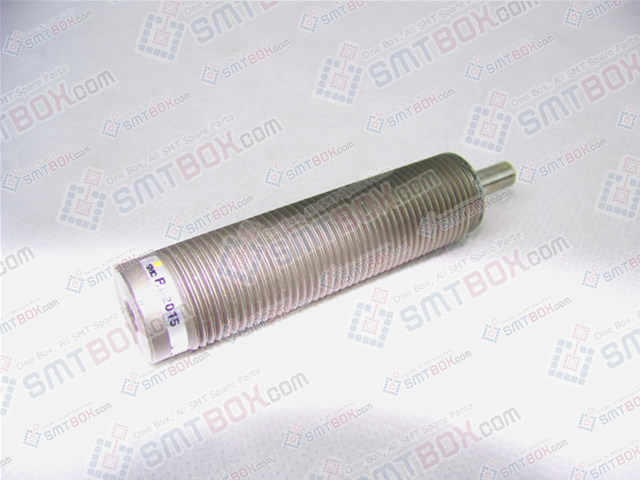Specifying the modules for an NXT After adding the NXT line, it is very important to configure the modules to match the modules in the current machine. Since items and modules are easily interchanged, always be sure to check the current module configuration.
1. Select the [Top] or [Bottom] tab from the job information bar depending on which side of the panel the machine is located for which the configuration data needs to be edited.
2. Double-click the name of the line to display the machines in that line.
3. Double-click the name of the NXT machine to set the configuration file for to display the items for that machine.
4. Double-click [Configuration] under the machines name and a window displays in the data area.
5. There are several tabs at the bottom of the [Machine Configuration] pane. The second tab is [Modules] and this is the location where the modules are set. Click this tab.
6. Click [Select] from the [Module Edit] group. A small dialog box displays with a representation of the current NXT module configuration. Click a module in this dialog box to jump to the information for that module. By using this dialog box, it is easy to navigate and understand the current module configuration. In addition, this dialog box can be used to jump to different modules on other tabs such as [Nozzle Changer Setup], and [Feeder Setup].
7. Check the current modules. If the number and type of modules is correct then proceed to step 16.
8. If the number of modules is incorrect, click [Add] and in the dialog box that displays, specify the position for the new module. Once the desired position has been specified, click [OK] and the module is added to the specified position using the default module settings. Continue adding modules until the number of modules is correct for the NXT machine.
Note: The NXT “machine” in Fuji Flexa is comprised of multiple bases that are next to each other. One NXT machine can be created with up to 32 modules in this manner (e.g., eight 4M bases with 4 M3 modules on each base). In this module configuration, the NXT machine will have the number of modules that all of the bases put together have regardless of the fact that the bases are different. For details on making the line configuration settings for the NXT, refer to the “Setting Up a Line with a NXT” chapter in the NXT Setup Manual.
Note: Do not use [Copy] to add a new module. Copy only will replace the settings of an existing module with the settings from the copied module. This is a convenient feature to use after adding new modules to apply the same settings to the new modules.
9. Once all of the necessary modules are present, select the first module and check the module configuration.
10.If the configuration needs to be changed, click the […] button to the right of the module name title. A dialog box displays with the possible module type and stage type configurations.
Note: It is possible to change the individual values for the different fields. However, if a invalid setting is selected, the text for the settings turns red to indicate that the selected values are incorrect.
11.Click the button that has the correct module type and stage configuration for the selected module. The selected settings are applied to the selected module and the possible choices for the selected option then are displayed. There are no more options if a conveyor unit is selected so the dialog box is closed.
12.Click the button that has the correct head type for the selected module. The selected settings are applied to the selected module and the possible choices for the selected option then are displayed. There are no more options if a glue head is selected so the dialog box is closed.
13.Click the button that has the correct nozzle station for the selected module. The selected settings are applied to the selected module and the dialog box is closed.
14.Specify any of the other settings that have a white background for the value cells as necessary. Refer to the table below for information.
Setting (i) Coplanarity: This specifies whether or not the module is equipped with coplanarity measuring unit. This is a NXT option.
Setting (ii) Camera Position: This setting only displays when for M6 modules and is used to specify the position of the camera. Only if a M6 has a feeder pallet is this setting valid.
Setting (iii) Actual Cycle Time Difference: Make a setting here when a difference between the projected cycle time and actual production cycle time exists for the module. Specify the difference between these two cycle times.
15.Repeat steps 10 to 14, while selecting the next module in the machine until all of the modules in the machine have the correct configuration.
16.If any pairs of M3 modules are to perform paired production, display the modules and change the setting [Perform Paired Module Production] to “Yes” for both modules. Specify any required stopping position offset. Repeat until all M3 modules that are to perform paired module production have the correct setting.
Note: Paired module production is when two M3 modules clamp a single panel across the conveyors for the modules and place parts on the same panel. Paired production can only be performed between set pairs of M3 modules. For example, modules 1 and 2 can share production together, however, modules 2 and 3 cannot.
17.If the created module configuration is the standard setup for the selected NXT machine, right-click the grey area outside of the setting area in the [Modules] tab and select [Save as the Default Machine Configuration] to save the current module configuration as the standard configuration. When the same machine is brought into a job from this point, the module configuration will be the same as that just specified.
